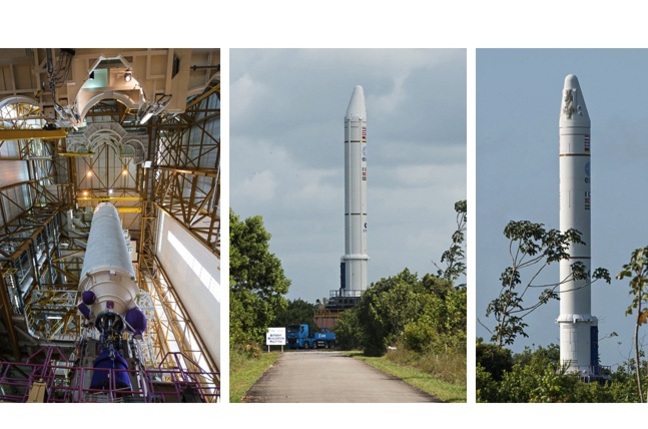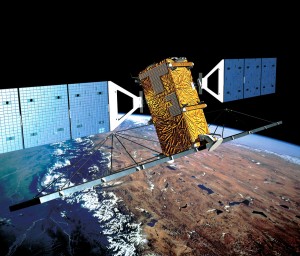US
Government officials from the US Commerce Department, Directorate of
Trade Controls and US Defense Security Administration were at pains to
communicate the new “industry friendly” position on ITAR export
regulations which became effective as of 10 November 2014. During a
presentation at the Satellite 2015 conference being held in the US capital Washington D.C. ITAR
regulators noted the changes and the dramatic decline in enquires and
their workload which has occurred since the new regime was introduced.
The major change is that commercial satellites have been removed from the US Munitions List and are no long considered as military exports. Many satellite components are also delisted and are no longer part of a blanket ban. The change was made after the US Government belatedly realised that the overly draconian ITAR regime was an export-damaging over-reaction to past space industry help given to China with is rocket guidance systems after Long March launch failures in the 1990s.
- See more at: http://seradata.com/SSI/2015/03/satellite-2015-reformed-itar-rules-transform-the-commercial-satellite-regulatory-environment/#sthash.J7pDlsiJ.dpuf
US Government officials from the US Commerce Department, Directorate of Trade Controls and US Defense Security Administration were at pains to communicate the new “industry friendly” position on ITAR export regulations which became effective as of 10 November 2014. During a presentation at the Satellite 2015 conference being held in the US capital Washington D.C. ITAR regulators noted the changes and the dramatic decline in enquires and their workload which has occurred since the new regime was introduced.The major change is that commercial satellites have been removed from the US Munitions List and are no long considered as military exports. Many satellite components are also delisted and are no longer part of a blanket ban. The change was made after the US Government belatedly realised that the overly draconian ITAR regime was an export-damaging over-reaction to past space industry help given to China with is rocket guidance systems after Long March launch failures in the 1990s.
- See more at: http://seradata.com/SSI/2015/03/satellite-2015-reformed-itar-rules-transform-the-commercial-satellite-regulatory-environment/#sthash.J7pDlsiJ.dpuf
The major change is that commercial satellites have been removed from the US Munitions List and are no long considered as military exports. Many satellite components are also delisted and are no longer part of a blanket ban. The change was made after the US Government belatedly realised that the overly draconian ITAR regime was an export-damaging over-reaction to past space industry help given to China with is rocket guidance systems after Long March launch failures in the 1990s.
Looser Satellite Export Restrictions Spark Drop in License Requests
WASHINGTON —
The loosening of U.S. satellite export restrictions that took effect
last Nov. 10 has led to “a huge reduction” in the number of license
requests because of the number of exports that do not require detailed
licensing review, U.S. State, Commerce and Defense department officials
said March 17 at the Satellite 2015 conference. - See more at:
http://spacenews.com/looser-satellite-export-restrictions-spark-drop-in-license-requests/#sthash.P3IWiVlA.dpuf
WASHINGTON
— The loosening of U.S. satellite export restrictions that took effect
last Nov. 10 has led to “a huge reduction” in the number of license
requests because of the number of exports that do not require detailed
licensing review, U.S. State, Commerce and Defense department officials
said March 17 at the Satellite 2015 conference. - The relaxation
removed certain categories of satellite components from the U.S.
Munitions List, meaning they were no longer restricted under the U.S.
International Traffic in Arms Regulations (ITAR) regime that classed
satellites as weapons. -Is My Satellite ITAR or EAR? | MIT OSP
On November 10, 2014, some satellites, spacecraft, and components were moved from the US Munitions List (USML, ITAR control) and added them to the Commerce Control List (CCL, EAR control):
- Communications satellites that do not contain classified components or capability
- Remote sensing satellites with performance parameters below certain thresholds
- Systems, subsystems parts, and components associated with these satellites and with performance parameters below a certain threshold
If your satellite or component is in the list below, it's subject to ITAR control. If not (assuming it doesn't appear in the full list either), it will be subject to EAR control, as described in Category 9 of the CCL.
New Satellite Rules Effective Today | American Trade & Manufacturing Blog
Posted in Export Controls
Today, the Department of State’s final rule (with corrections available here) and the Department of Commerce’s final rule revising
the export controls applicable to satellites and related parts,
components, software, technology, and services became effective. The
agencies published interim final rules detailing
the changes in May 2014. This is long-awaited and welcome news to the
satellite and space industry, as commercial communications satellites
(without classified components or capability), remote sensing satellites
with performance parameters below certain thresholds, as well as a
number of other items are now controlled by Commerce’s Export
Administration Regulations (EAR), rather than State’s International
Traffic in Arms Regulations (ITAR). Of course, most of the items that
now fall under the purview of the EAR will remain subject to fairly
stringent export controls requirements, including special controls and
rules applicable to countries subject to arms embargo policies. There
are two points of note in the new rules:
- First, State and Commerce codified existing policy regarding telemetry data. Neither the ITAR nor new Export Control Classification Number (ECCN) 9E515 in the EAR covering technology related to the formerly ITAR-controlled satellites and spacecraft control data transmitted to or from a satellite or spacecraft, whether real or simulated, when limited to information about the health, operational status, or function of, or measurements or raw sensor output from, the spacecraft, spacecraft payload(s), or their associated subsystems or components.
- Second, even if a satellite or spacecraft has shifted from ITAR- to
EAR-controlled, defense services still may be an issue. In this
connection, the ITAR explicitly controls furnishing
assistance in the integration of a satellite or spacecraft to a launch vehicle (planning and onsite support) and in the launch failure analysis of a satellite or spacecraft, regardless of the jurisdiction, ownership, or origin of the satellite or spacecraft and regardless of whether or not ITAR-controlled technical data is used. In other words, these types of activities require authorization under the ITAR even if the satellite or spacecraft is now EAR-controlled and even if no ITAR-controlled technical data is transferred.
These are
just two of many revisions and clarifications made by State’s and
Commerce’s final rules. Now that the much anticipated change to U.S.
export controls on satellites is a reality, manufacturers and exporters
should carefully review the new rules to determine where their products
and technology fall and make any necessary changes to their export
compliance programs.

















